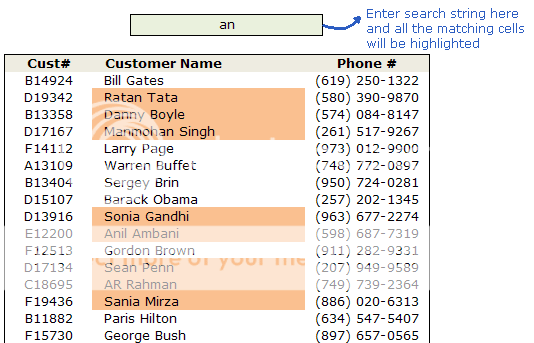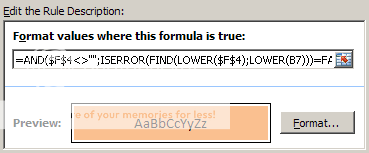Many of us use spreadsheets to manage huge lists of data, like customer data bases, salesperson data bases etc.
Today we will learn a little conditional formatting trick that you can use to search a worksheet full of data and highlight the matching cells.

First identify which cell you want to use as search bar. Lets say we choose F4.
Now, Select the data cells you want to search and go to conditional formatting.
 We will write a simple formula that returns true if a cell has the content you typed in the search bar (F4) and false if the cell doesnt. You can try something like
We will write a simple formula that returns true if a cell has the content you typed in the search bar (F4) and false if the cell doesnt. You can try something like ISERROR(FIND(LOWER($F$4),LOWER(B7)))=FALSE.
But there is a problem with this, it returns true when the search bar is empty, and thus you end up highlighting all cells. So we add a further condition that will highlight the matched cells only if the search bar contains some data.
The formula looks like,
=AND($F$4<>"",ISERROR(FIND(LOWER($F$4),LOWER(B7)))=FALSE)
Finally set the formatting you want to use. I choose dull orange color. You can choose blue, green or pink too.
Hit ok and you are good to go.
Additional Material on Conditional Formatting:
Excel Conditional Formatting Basics
Highlight Top 10 Items in a List using Conditional Formatting
5 Rock Star Conditional Formatting Tips




















One Response to “How to export YouTube video comments to Excel file? – Free template + Power Query case study”
And I asked myself when i saw your Accouncement Video for the Give away: "Seriously, will Chandoo go manualy thru all his Videos and pick the winners?!". Great connection to the give away with this tutorial 🙂 !